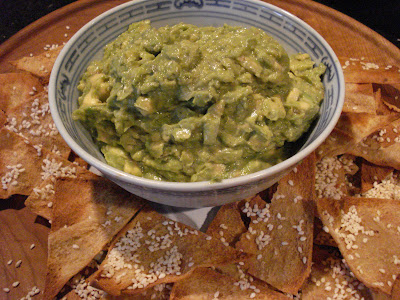I don't know about for you, but for me
Osso Bucco is one of those legendary meals that looms large in my culinary imagination--right up there with Baked Alaska and the three-days-in-preparation Cassoulet.
I'm not sure I even knew exactly what it was, but I knew that it was in the Gourmet Cookbook, and that I'd be making it someday.
Yesterday was the day.
I didn't really plan on it. But last night was K. and L.'s final night before their departure today and as I like to do with them (beautiful hedonists that they are) I put some special thought into their dinner and thought I would make a veal dish with a good wine.
Being the smart lass that I am, I figured I'd CALL Stop and Shop before I got there, so I could see what they had, and mull over the cookbook accordingly in the house.
They had:
rib chops
flank chops
scallopini
osso bucco
"What does that mean, Osso Bucco?" I asked.
"It means the shanks FOR Osso Bucco," explained the guy.
OK! Now, if you look at the head notes for this recipe, you'll see words like "velvet" and "buttery", and you'll also see that it's one of those slow-cooking low-oven recipes.
Sign me up.
I had a moment of consternation when I was actually standing in front of the meat case, because the book tells you to get eight 12 to 16 oz shanks.

What they had on display were four packages of shanks that had been cross-cut.

Oh well. I bought all they had and ended up with about half (in weight) of what the recipe called for. I was cooking for three, after all, not eight.
In retrospect, I'm glad the cross-cut shanks were what I used--I think whole shanks would have been too unwieldy, especially for Mrs. S.
The preparation is classic French technique--dredge the meat in flour and brown in pan, then deglaze with wine. Make a mirepoix of finely chopped onions, celery, carrots and garlic, and saute. Add a bouquet garni, the browned shanks, chopped tomatoes (I used canned), and beef broth. Cook in a low oven until you can't resist the smell anymore, then take it out and EAT IT.
No, actually there are a few more steps. Take the pot out and remove the shanks, then strain the broth from the vegetables. Then reduce the sauce a bit--this will be your mopping liquid, because the shanks go back in the oven, uncovered, and you baste them with the broth.
I've never had veal shanks before, and I was blown away by how tender the meat was. I've also never eaten marrow before (though I've heard people talk swooningly about it) and I tried some of that...eh. I could take it or leave it. Frankly, all I could think was--is this really where stem cells come from? The marrow? Not such an appetizing train of thought.
What surprised me was the collagen. That's the sort of rubbery stuff that that holds the meat together, and when it's cooked for a long time it gets very soft, though it retains its shape. They were sort of like meat-flavored egg noodles.
Oh, people. This is a dish for the ages. I can see why it's so famous.
K. and L. were transported. I was especially happy with the meal because K. informed me that many people do osso bucco "not so well". I can't imagine how you could screw this meal up--it seems so straightforward--but I suppose anything is possible.

This is obviously not my photo (thanks, paperblog.fr)--I wasn't quite organized enough to get a final plate shot last night.
One final note--the gremolata (minced parley and garlic + lemon zest) was a take-it or leave-it for me. It was good with the meat, but the meal would not have been incomplete without it. It does look pretty, though.
***************************************************
Readers with long memories will recall that last summer I bought a case of sour cherries and spent the day pitting them by hand, then bagging and freezing them according to recipe requirements.
For example, I might have a bag in the freezer that said "Cherry Tortoni--1 lb." Actually, believe it or not, Teena did the exact same thing, and when we had coffee together earlier this summer we had a laugh over how geeky that is, and that we had both done it.
So I had one last bag of cherries kicking around from last summer that I wanted to use (the above-mentioned Cherry Tortoni bag), and since I wasn't up to making Cherry Tortoni (which would have required a trip to the store which may or may not have had the cookies I needed) I looked for another cherry recipe that required 1 lb. of sour cherries.
Chilled Sour Cherry Soup was what I settled on. We had a small dinner party going on at work, and although I had some chocolate cream pie to offer, I thought I'd add this to the dessert roster as an alternative.
This recipe isn't on epicurious, but the head notes say that it's adapted from a classic Hungarian dessert. The basic idea is cherries, sugar, water, cinnamon and lemon zest, thickened a bit with cornstarch, then chilled. A sour cream + cream combo is drizzed on top right before serving.
I was a little worried that this would be glorified pie filling, but it never got that thick. The flavor was really yummy--perfect for summer--and the sour cream on top was a great complement. My only complaint about that was that it wasn't thin enough to "drizzle" as the recipe directs--more of a "plop".
Here's a photo of what it's supposed to look like--I'll try to get a photo today at work so I'm not using somebody else's pic.































